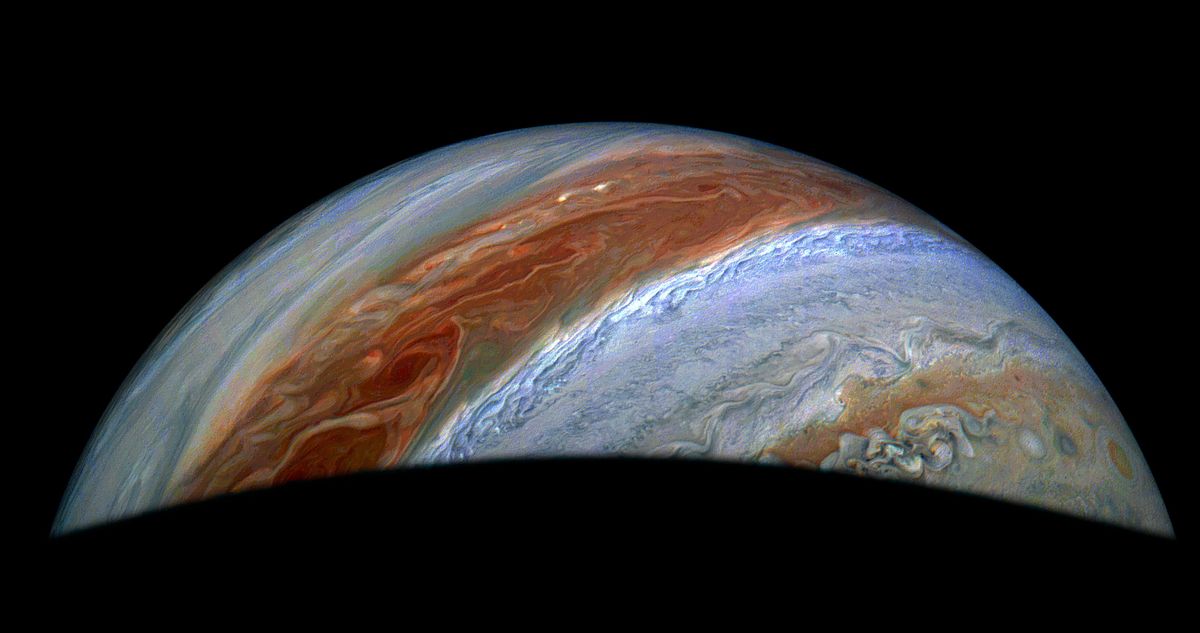New data from NASA's Juno mission shows winds beneath Jupiter and Io surfaces [View all]
May 1, 2025
By Evrim Yazgin
NASA’s Juno mission has peered below the surface to help scientists better understand Jupiter’s storms and its moon Io’s subsurface temperature.

Jupiter seen over moon silhouette
Jupiter, as seen by NASA’s Juno spacecraft on Dec. 28, 2024. Credit: NASA / SwRI / MSSS / Jackie Branc (CC BY).
Juno was launched in 2011 and has been in orbit around Jupiter since 2016. Its mission has been extended a beyond its original 5 years. It is now due to finish in September this year, or until the end of the spacecraft’s life.
NASA has provided an update of the latest findings from Juno.
The mission team used the spacecraft’s microwave radiometer (MWR) to look at Io – one of Jupiter’s 4 largest moons, together known as the Galilean satellites because they were first observed by Galileo Galilei in 1610.
The MWR instrument was originally designed to peer beneath Jupiter’s clouds.
“The Juno science team loves to combine very different datasets from very different instruments and see what we can learn,” says Juno scientist Shannon Brown, from NASA’s Jet Propulsion Laboratory in Southern California.
“When we incorporated the MWR data with JIRAM’s infrared imagery, we were surprised by what we saw: evidence of still-warm magma that hasn’t yet solidified below Io’s cooled crust. At every latitude and longitude, there were cooling lava flows,” Brown says.
More:
https://cosmosmagazine.com/space/astronomy/nasa-juno-jupiter-io-surface/
